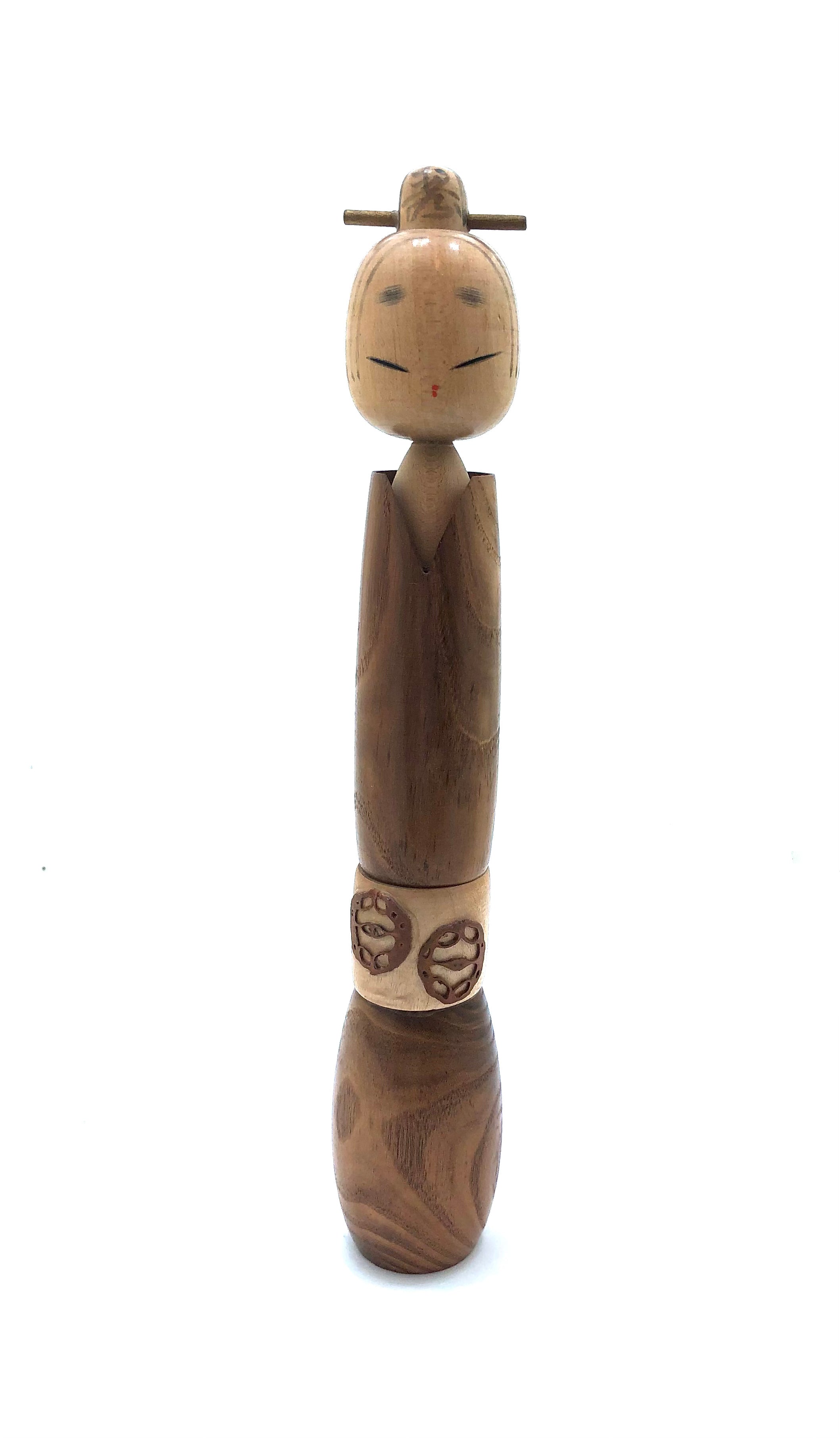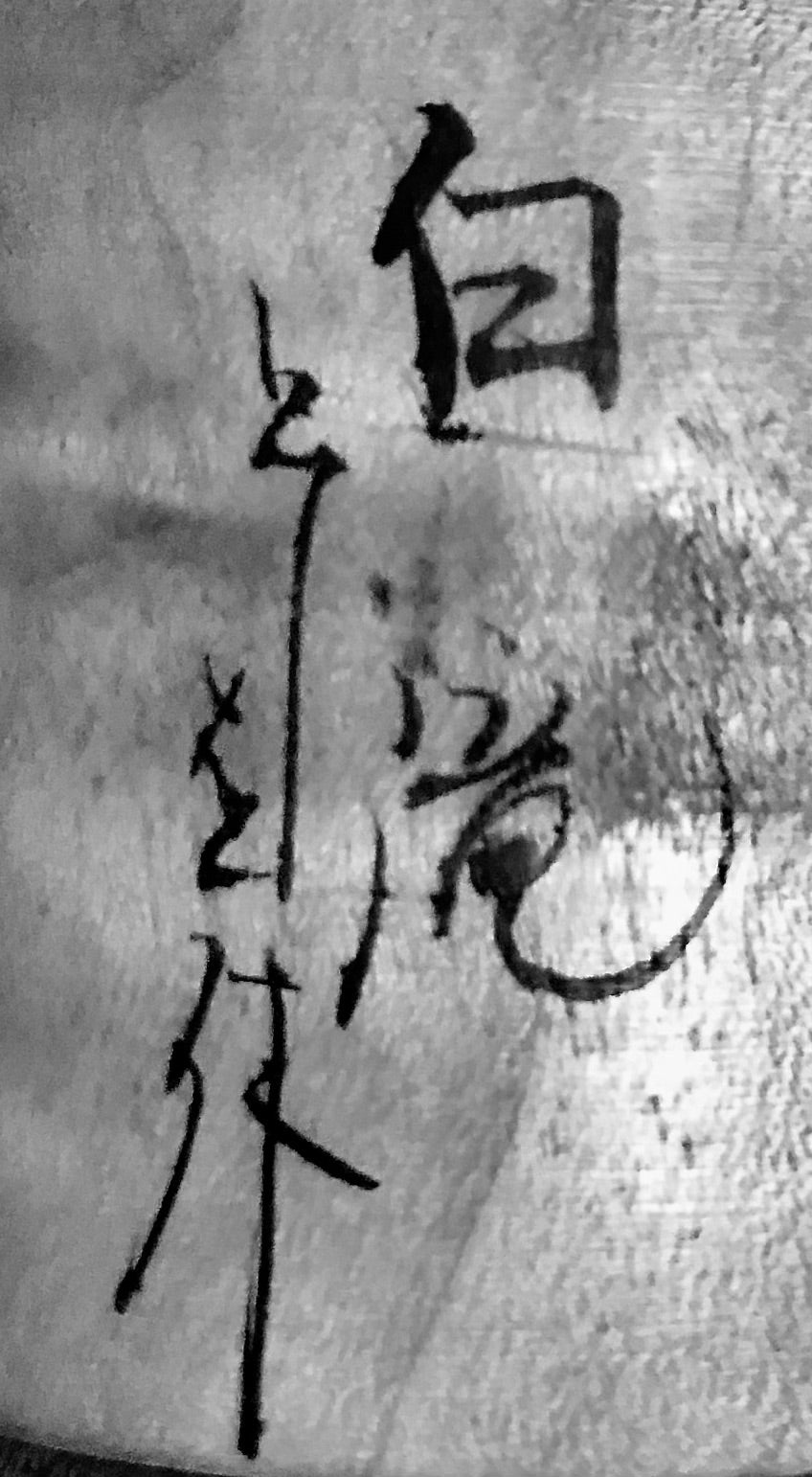

Vintage Sosaku Kokeshi entitled: “Kurumi no’nanoko | Walnut Girl” by Sekiguchi, Toshio
Dimensions: 12-0”h
A rare and most interesting doll with an ornamented ‘Mage’ treatment with half chrysanthemum flowers and a Kansashi made of a simple dowel, holds the wrapped hair to keep it in place. Sekiguchi-san outlines the hair through sumi-e line work. It has a minimally-detailed face with the ‘bindi’, which is a Hindu tradition and worn by women for religious purposes or to indicate that they’re married. The doll is made of waxed walnut in its natural color, with five sections of actual walnuts affixed to the Obi. The Obi itself is an inset of lighter wood and is seen as a separate detail. The doll is titled on the obi with its name, his script signature, and his red impressed stamp.
Condition: Excellent, original condition, with no fading or loss of color and consistent with age. The piece meets all the standards of collectible Folk Art.

Artisan
Woodworker: Sekiguchi, Toshio
1947-
Biographical History:
Little has been published about Toshio-san but we know that he was born in Gunma Prefecture in 1947, Toshio is not related to Sekiguchi, Sansaku, and his family. He won the Craft Council Award for his extraordinary forms. Beyond this information, nothing else has been written about this artist. As collectors, we felt it was most important to represent all Sosaku Kokeshi artists, whether or not each artist has a written account of his/her life. We show the diversity of cultural values and the creative work produced by a multitude of artists.
In researching old writings through articles and books that remain, it is evident that the Kokeshi Craftsperson not only created beautiful forms as toys, but also kept alive cultural values, customs, and fashion through the extensive representations of Kokeshi dolls. The beauty is in the doll and not the signatures, for most masters never signed their dolls. Later they named the dolls, but only when Westerners insisted on signatures because they did not know the artists, so the carvers began to sign their works, for the carvers wanted to promote sales to make a living, during the seasons that did not provide an environment to continue their otherwise daily work.
Collector's note – descriptive qualities, standard characteristics & ornamentation styles:
Toshio’s piece featured in the center of the associated images is entitled, “Natsu.no.hi”, (Summer Day), is a beatifully painted doll of Mizuki (Dogwood). Numerous motifs are used in this and other dolls, including natural elements such as walnut sections, abstracted chrysanthemum flowers, and details of textiles. All are executed in natural woods, gold, silver and black. Additionally shown are several lathe-turned dolls turned from one piece of natural light oak incorporating a beautiful, carved transition between the neck of the figure and the Kimono. These dolls are finished with a clear candle wax (Rosoku no ro), with traditional features shown on the face and a girlish ‘bob” hairstyle. The only decorative element is the affixed, natural, and dark walnut sections on the front of his garment, contrasting the smooth surfaces of the doll. Most of his dolls display traditional hairstyles and hairpieces if at all. Toshio demonstrates artistic, painterly abilities with beautiful details throughout a variety of creations and sizes.
Explore & Learn More about Woodworker: Sekiguchi, Toshio